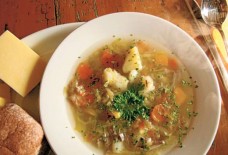Refugees welcome: Many Syrian, Lebanese refugees thrive in valley
William Kashatus
Citizensvoice.com
Syria’s bloody civil war has brought the largest number of refugees and asylum-seekers to the United States in a decade, and thousands more are expected in 2016. But the Wyoming Valley has been home to Syrian as well as Lebanese refugees since the early 20th century.
Between 1892 and the 1910s, the Syrians and Lebanese escaped religious persecution and economic hardship in the Middle East in the hope of a new start in the Wyoming Valley. While the Syrians migrated from Wadi-Nasaara, an area of many Christian villages, in north-western Syria, close to the Mediterranean Sea, the Lebanese came from Al-Koura in Northern Lebanon overlooking Tripoli.
Neither of the two ethnic groups ever numbered more than a few thousand, but they have contributed much to the rich cultural diversity of the region.
According to Edward G. Hartman’s “Ethnic History of the Wyoming Valley,” Syrian and Lebanese refugees were not initially welcomed very warmly by their Eastern European neighbors because of their darker skin color and language. In time, however, both groups won over the respect of these and other immigrant groups as well as native-born Americans.
The Syrians, mostly Orthodox Christians, flocked to Wilkes-Barre. By 1904, there were some 35 families who formed St. Mary’s Orthodox Church. The Rev. Michael John Curry Saba was appointed minister and from 1904 to 1908, the congregation gathered and worshiped in private homes located at 7 McCarragher St. and 9 Moyallen St.
Under the leadership of Father George Kattouf, who served as minister between 1908 and 1912, St. Mary’s established a permanent church on High Street and the congregation grew to more than 75 families.
This first generation of Syrian refugees tended to seek employment as dry goods merchants and restaurant owners, like Abraham Obeid. Obeid left his native town of Mishtayeh in 1925 after the Syrian government confiscated his olive and fig orchards. Relocating in Wilkes-Barre, he attended night classes at Meyers High School. Shortly after, Obeid opened “Abe’s Community Lunch” on South Main Street known as “Abe’s Hot Dogs.”
The early Syrians were an extremely education-conscious people. Many arrived in the Wyoming Valley as children or teenagers, quickly learned to speak the English language and went to school part-time while working in family-owned and operated businesses. They and their descendants realized the American dream by becoming engineers, physicians, businessmen and educators.
Like the Syrians, the early Lebanese refugees, mostly Maronite Catholic, escaped religious persecution and economic hardship in their native country. They flocked to Wilkes-Barre’s Hill section and settled in the neighborhood bounded by Loomis and Hazle streets and Park Avenue. Here, the Lebanese established St. George’s Church and St. Anthony’s Maronite Rite Church.
The Lebanese also tended to avoid coal mining. According to Albert Albert, a historian for the Maronite Church, the Lebanese were “deadly afraid of going underground.” “They were superstitious people who hoped to stay as far away from hell as possible,” he added with a chuckle.
Instead, Lebanese refugees like Mansour Abou Dagher and George Raad, took advantage of the economic boom created by the anthracite industry to peddle dry goods door to door, servicing coal miners and their families. Eventually, they saved enough money to purchase steamship tickets for family members they left behind in Lebanon. Today, their descendants bear the surnames “Decker” and “Reed,” respectively.
During the 20th century, Wilkes-Barre’s Lebanese-Americans became successful businessmen like George Albert, who along with other family members, founded Bloomsburg Metal Co., and Thomas C. Thomas, who flourished as a distributor of wholesale fruit, vegetables, fish, and frozen food products.
Over the years, however, both the Syrians and Lebanese gradually abandoned their distinct ethnic traditions. Instead, they assimilated so completely into the American melting pot as to become indistinguishable from the Valley’s other residents. Hopefully, history will repeat itself for the current wave of Syrian refugees.
According to the U.S. State Department, of the millions of Syrian refugees who have fled attacks by their government and the terrorist Islamic State since the beginning of the civil war in March of this year, 1,500 have been resettled in the United States with the goal of bringing upwards of 2,000 in by the end of 2015 and another proposed 5,000 to 8,000 refugees next year.
At least two families have already settled in the Wyoming Valley, thanks to Catholic Social Services of the Dioceses of Scranton, which began resettling refugees in Luzerne and Lackawanna counties in 1975.
Hopefully, their numbers will increase as the U.S. Department of Homeland Security and the Federal Bureau of Investigation restructure the screening process to identify and remove terrorists who might try to infiltrate this new wave of refugees.
Like their forbearers, the new generation of Syrians will enrich the life of our community as they come to realize their American dream as well as ours.
Source: citizensvoice.com



